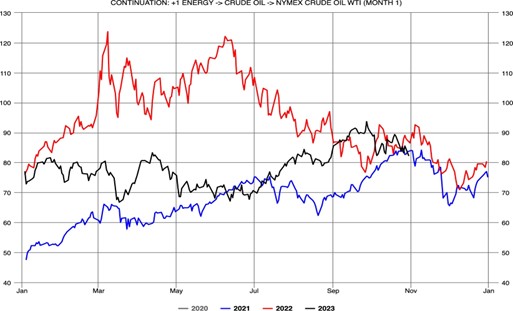Dr. Ken Rietz
November 3, 2023
I usually avoid the big issues in the media. This week, I want to tackle a topic that has been plastered all over the press: the mergers initiated by ExxonMobil (Exxon) and Chevron. The purpose is to fill in what the press omitted and then to look at what these mega-mergers indicate about what these companies think about the future. First, let me give an overview of what happened.
On October 11, 2023, Exxon announced their purchase of Pioneer Natural Resources, and on October 23, 2023, Chevron announced their purchase of Hess Corporation. Some such moves were expected. When petroleum companies have very large reserves of money, mergers and acquisitions are common; but when the two largest (by revenue) oil companies both acquire smaller companies in such a short period of time, something else may also be happening. The curious thing is that both these acquisitions were all-share deals, so both companies still have large reserves of cash. It is possible that the cash could then be used for the buyback of shares.
We begin our discussion with a graph of NYMEX WTI prices, which we will reference at the end of this commentary.

Figure 1: NYMEX prices of WTI crude, in USD per barrel
First up is the Exxon purchase of Pioneer. The timing was interesting. About a month before the acquisition, the head of the International Energy Agency (IEA) announced that Peak Oil would occur before 2030. This was rapidly rejected by OPEC. The purpose of these statements might have been to influence public perceptions. But the purchase by Exxon seemed like tangible evidence of the same position OPEC held, and OPEC quickly said so. Investigating Exxon’s global positions is even more interesting. Exxon has a diverse portfolio and is well positioned in deepwater drilling but was not a leader in drilling in the Permian. The purchase of Pioneer changes that, and Exxon has said that it will aggressively pursue their dominance in the Permian Midland Basin.
Chevron’s purchase of Hess is an attempt to supplement some imbalances in Chevron’s exposure, which gains more territory in the Williston Basin, but gives it many more international opportunities. Specifically, Hess has claim to some of the Stabroek block in Guyana, where Exxon was already working. There have been recent discoveries of significant amounts of gas and oil there, announced by Guyana. It has been characterized as one of the world’s hottest growth regions.
But what are the implications of these purchases? Of course, the companies are saying that they foresee a long-term need for petroleum products. The demand for petroleum products, specifically petrochemicals (a large portion of which is plastics), will most likely continue, if not grow. And these two majors are making sure, with these purchases, that their supply of crude oil for all purposes is adequate for years to come. Another thing is to determine what the overall market thinks of the acquisitions. The easiest way to tell that is using the price of crude oil. Looking at the graph given above, it is clear that the market is not concerned. There were no unusual movements in the price to indicate any reaction.